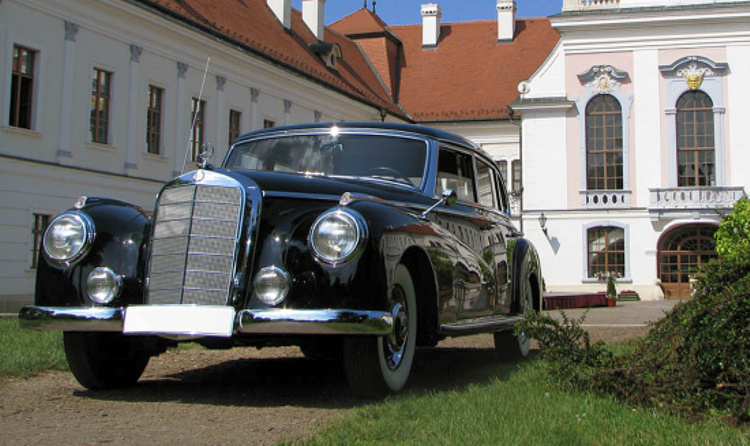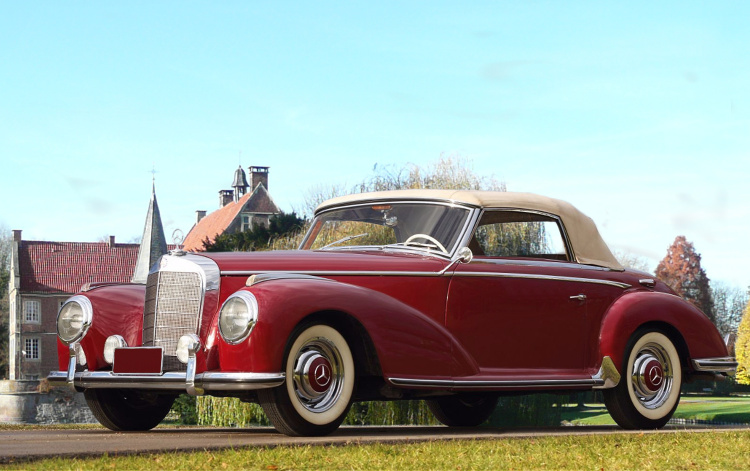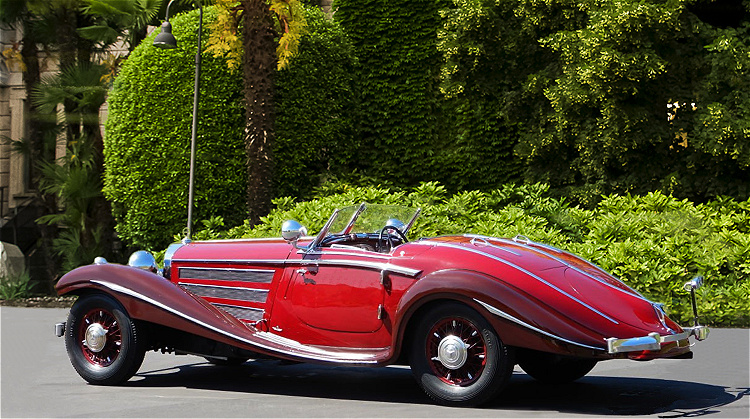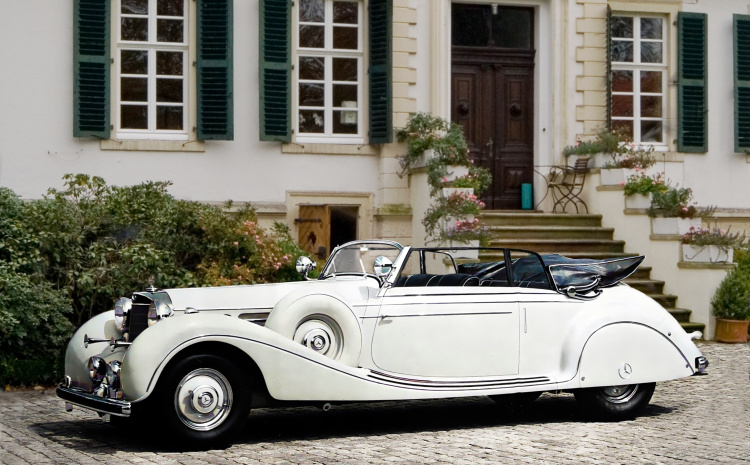Mercedes 500K W29: the car that stunned the world
Mercedes 500K: In March 1934, a brand-new, elegant car was unveiled at the Berlin Motor Show. It was the imposing 500K (internal code W29) sports car with a supercharged eight-cylinder engine in form of the magnificent Autobahnkurier (Highway Courier).
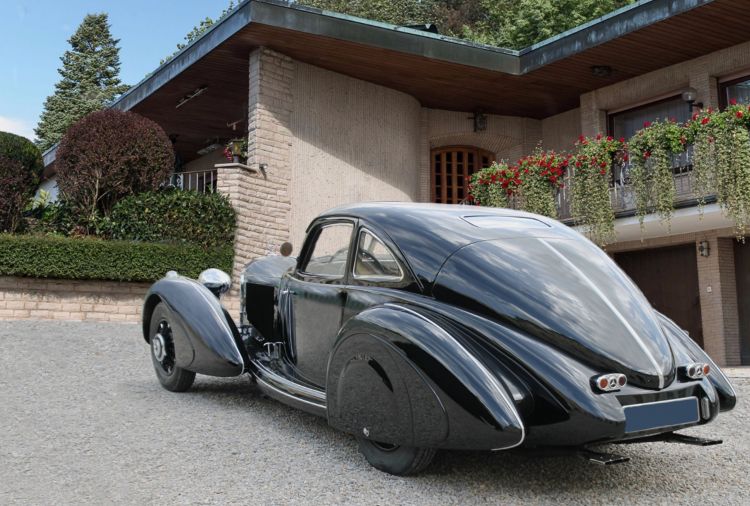
The 500K was the successor to the less powerful 380, which had been introduced just one year earlier. As it turned out, the 380 was not fast enough for most buyers.
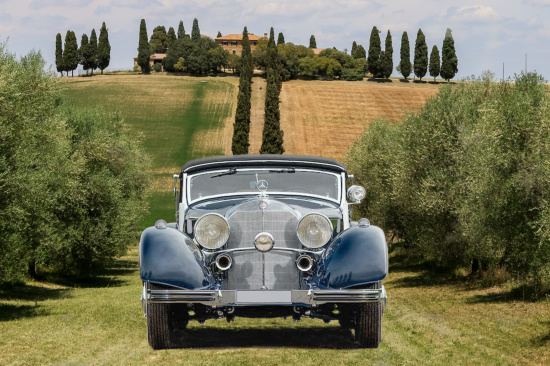
Mercedes 500K Cabrio A
The new car should be regarded as an elegant two- or four-seater sports car with roadster and cabriolet bodies made at the Daimler-Benz plant in Sindelfingen. With this model, the company had surpassed many of its competitors. Technically it had finally arrived in the 1930s.
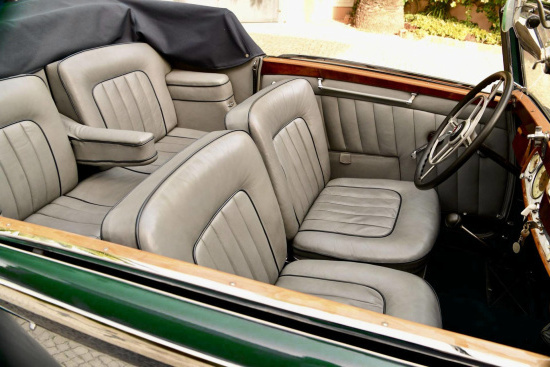
Interior of a 500K Cabriolet C
The Mercedes 500K succeeded the less popular and less powerful 380
The Mercedes 500K was designed to appeal to the well-heeled who were no longer satisfied with the supercharged but almost brutal S and SS models. The new car was not only powerful. It was also more elegant and much more comfortable. And with the new suspension it was also easier to handle than its predecessors. As was customary in those days, various body styles were offerd:
- Autobahnkurier
- Coupé
- Sedan two-doors
- Sedan four-doors
- Open Tourer
- Cabriolet A
- Cabriolet B
- Cabriolet C
- Roadster
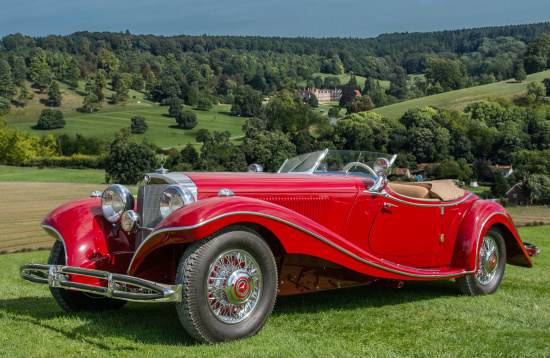
Mercedes 500K Special Roadster
The suspension, first introduced in 1933 with the 380 model, was responsible for the increase in comfort and handling. For the first time, wheel position, suspension and damping were separated from each other. This resulted in a high degree of precision in straight-line stability. The new double wishbone axle came with coil springs at the front and the double-joint swing axle at the rear. Double coil springs and an additional transversal balance spring were added too.
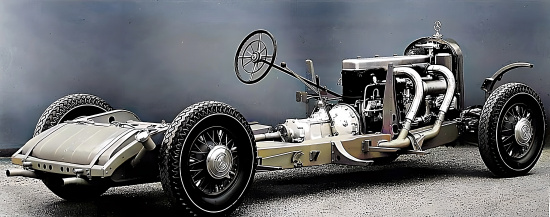
Chassis of the W29 Kompressor car, here from a 540K (photo courtesy of Mercedes-Benz Group AG)
The 500K’s engine produced 160 hp with the supercharger engaged and 100 hp without, both at 3,400 rpm. Maximum torque was 412 Nm at 2,200 rpm. Both the cylinder block and crankcase were made of special cast iron, as was the cylinder head, in which the valves were arranged in a parallel hanging arrangement. They were operated by pushrods and rocker arms. After several unsuccessful attempts, lightweight construction was abandoned in favor of durability. As a result, the fully equipped 500K engine (pictures below from a Cabrio B) weighed an impressive 600 kg (1,320 lbs).
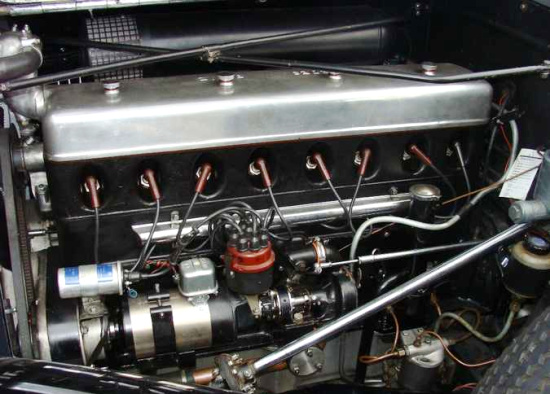
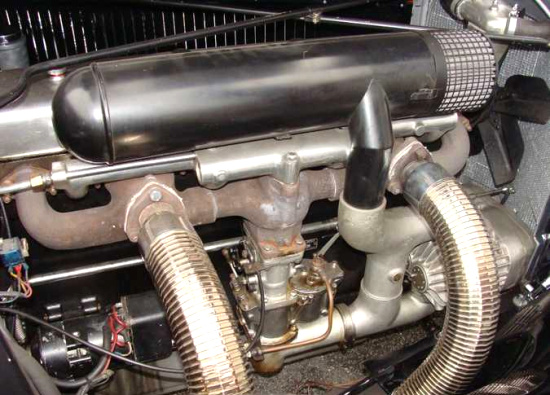
The compressor could not be used for long
Add to this 1,700 kg (3,740 lbs) for the sturdy chassis and it is understandable that a fully equipped Mercedes 500K had a curb weight of about 2.3 tons. So the supercharger was definitely needed to give the car the desired boost in performance. However, this pleasure was not to be enjoyed for too long. The durability of the crankshaft drive still set strict limits. After one minute at the latest, the Allegro Furioso had to stop and the driver had to take his foot off the accelerator.
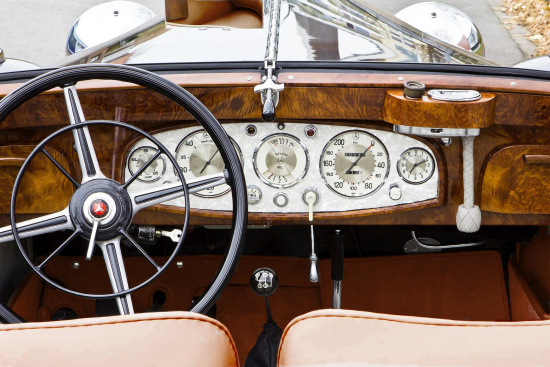
Dashboard of a Mercedes 500K Cabrio C
The press sometimes criticized the somewhat stiff shifting of the gearbox, which was synchronized from second to fourth gear. But for the average driver, a three-speed transmission would have been enough. In fact, with all the torque available, there was no real need for a four-speed. And it was for some manufacturers even a selling point at the time. People did not like to shift, especially when the lower gears were rarely synchronized. When the automatic came along, many drivers thought it was the greatest thing since sliced bread. Now, as enthusiasts, we all want four speed manual gearboxes 🙂

Mercedes 500K Sedan two-door
The torque of the Mercedes 500K’s engine allowed for reduced gear shifting
But with this car, you just put it in third gear and you could pull away in this gear. You could slow down to five miles an hour, floor the accelerator, and just pull away again. And of course the overdrive was great on the newly built German Autobahn.
Next to the body styles, three chassis variants were offered. Two long versions had a wheelbase of 3,290 millimeters, which differed in the drivetrain and body layout. And there was a short version with a wheelbase of 2,980 millimeters.
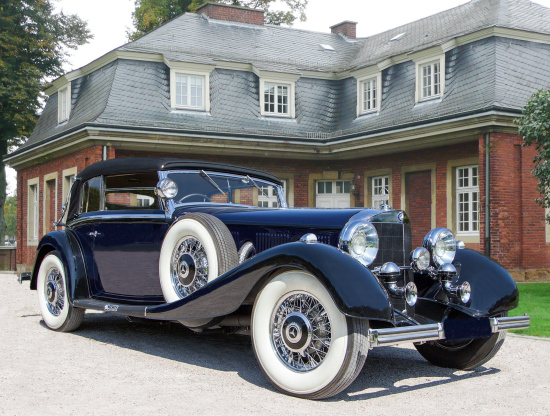
A Mercedes 500K Cabrio B (above) and Cabrio C (below)
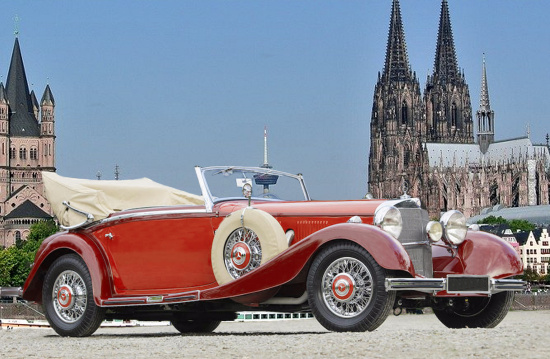
The longer version, the so-called standard chassis, had the radiator directly over the front axle. It served as the backbone for the four-seater Cabriolet B (with four side windows) and C (with two side windows). Later it was also used for the Open Tourer and the Sedan.
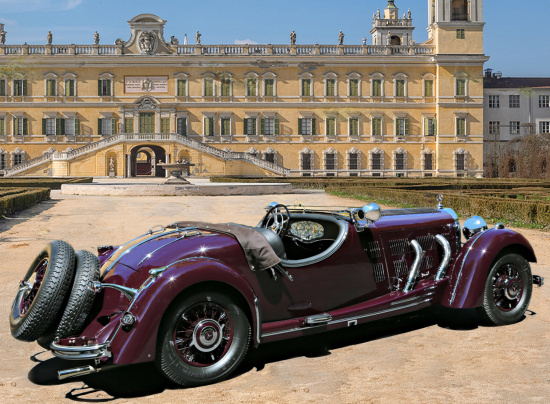
A 500K Roadster (above), an Open Tourer and an Open Tourer interior (below)
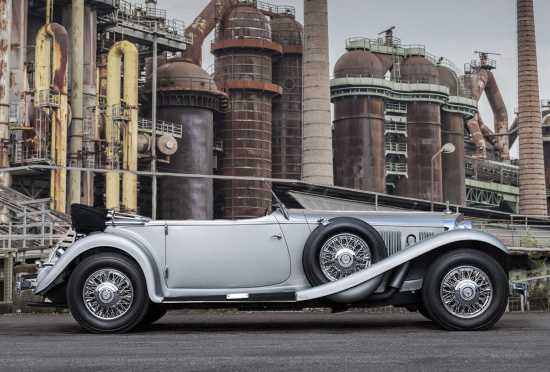
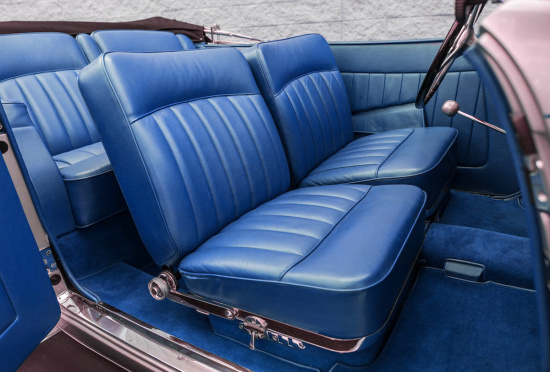
The Roadster and the two-seater Cabriolet A (with two side windows) were built on a chassis with the radiator, engine, cockpit and all rear modules set 185 millimeters (6 inches) back from the front axle. This configuration was a concession to the spirit of the times. It was a little trick that created the visual impression of a particularly long front end. It should add the desired sporting appeal. The Autobahnkurier, the first car with curved side windows and classified by DB as a sports sedan, used the same set-up.,
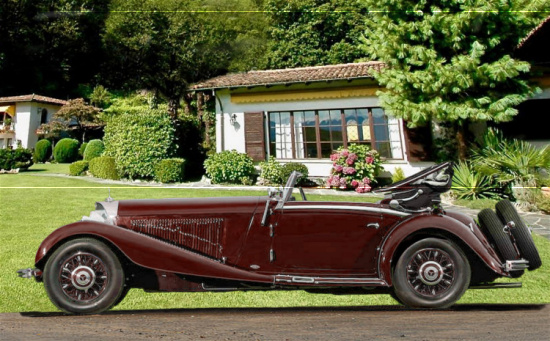
This Cabrio A is for many aficionados at least as desirable as the Spezial Roadster
The Spezial Roadster was and is the most attractive version
The most elegant model of the 500K series was, of course, the two-seater Spezial Roadster. Its price – 28,000 Reichsmark (RM) – was 6,000 RM higher than the average price of the other versions. You could buy a well-appointed house for that kind of money. But when compared with the even bigger 7.7-liter 770 W07 Mercedes Grosser, its price appeared reasonable. Because prices for the Grosser started at 44,000 RM.

The Mercedes 500K Spezial Roadster in its most famous design form. It is as high-door, long-tail model with a cover over the single spare tire recessed into the rear deck. Below is the interior of another Spezial Roadster
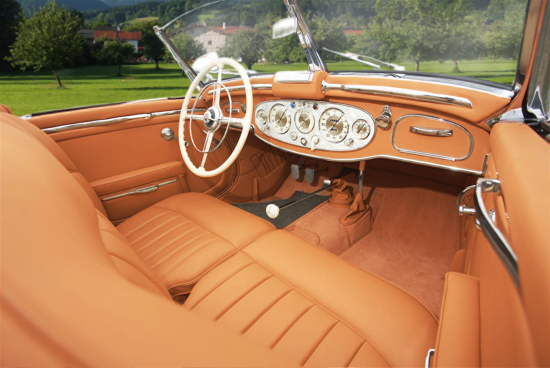


The Coupé had similar elegant lines
The short wheelbase chassis was only used for a few two-seaters with special bodies. On these models the radiator was located right above the front axle and the models were called 500K Sports Roadster, Sports Cabriolet and Sports Coupé.

The Sports Roadster on the shorter wheelbase
The standard Mercedes 500K came with
- two spare wheels
- safety glass
- electric windshield wipers
- hydraulic brakes with vacuum booster
- 370 mm diameter drums
- central lubrication
- 12-volt electrical system and
- a center-mounted fog lamp
Designed for the network of high-speed autobahns that spread across Germany in the 1930s, the Mercedes 500K represented the ultimate in automotive engineering at the time. And the Special Body Department in Sindelfingen made sure that almost every wish of its discerning clientele was met. This included
- individual fender versions
- rear- and front-ned designs and
- various interior finishes
Thanks to the persuasive work of Hermann Ahrens and his team, many customers opted for bodies made by Sindelfingen instead of independent bodybuilders.
Only a few Mercedes 500K received bodies by outside coachbuilders
The next pictures show just three of the cars built by other coachbuilders. The first one is a Drop Head Coupé by Windovers. The second one shows a Coupé by Vanvooren and the third one an Open Tourer by Erdmann & Rossi.
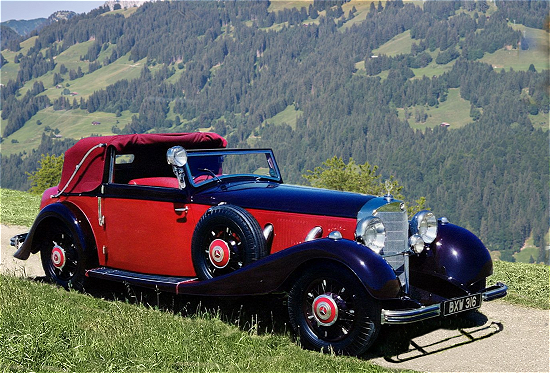

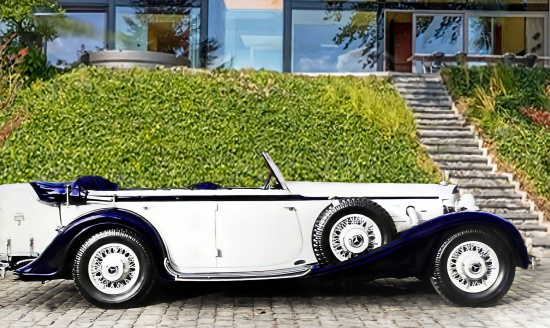
A total of 342 examples were built from 1934 to 1936. 105 were produced in 1934, 190 in 1935, and just 59 in 1936. Of the 41 chassis that were sent to individual coachbuilders, Erdmann & Rossi received 18. This made the Berlin-based firm the second most successful coachbuilder for the 500K after Sindelfingen. In 1936 the car was replaced by the even more powerful 540K. Here is a sales breakdown of the individual body versions produced:
- Cabriolet B: 106
- Cabriolet C: 90
- Cabriolet A: 33
- Roadster: 29
- Sedan four-doors: 19
- Open Tourer: 16
- Autobanhkurier: 4
- Coupé: 3
- Sedan two-doors: 1
- Chassis: 41
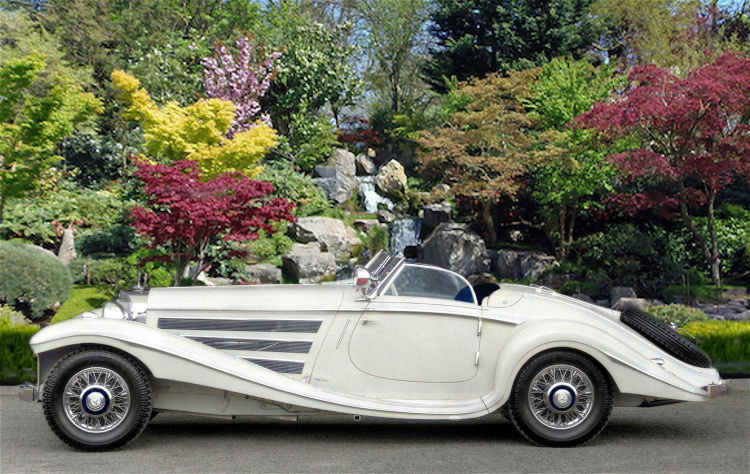
If you want to know more about the development and history of these fascinating cars, here is the link to my book about them. With over 240 pages, it covers next to the 500K and 540K models also the rare Sindelfingen one-off cars and those created by nine coachbuilders from Corsica to Windovers. Another chapter deals with the V8 and V12 prototypes. Many new color photos, never published in a book before, show you interesting details of most of the cars.
The Link leads you to the US Amazon site. The title of the book is the same on Amazon in other markets.

